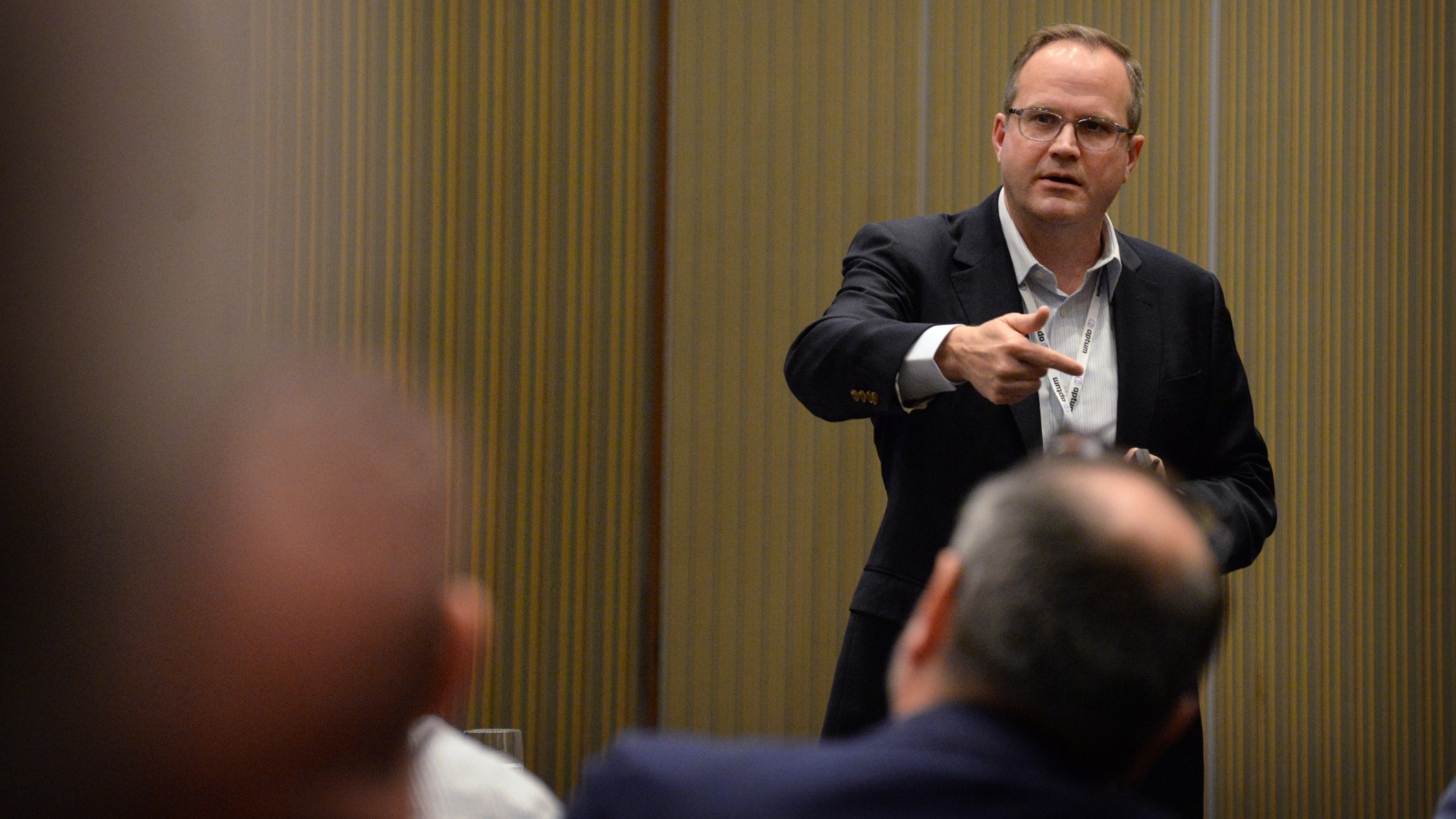Science
Ecosystems Drive Technology Adoption: Lessons from Experts

In a candid address at the CIO Association of Canada’s Peer Forum in Ottawa, Michael Lewis, Chief Technology Officer at Management Controls, highlighted the critical role ecosystems play in technology adoption. Lewis shared insights from nearly two decades of experience in software development for large industrial organizations, emphasizing that successful technology implementation hinges on the collaboration of various stakeholders, including owners, vendors, and front-line users.
Lewis underscored that a single misstep in complex ecosystems could derail adoption efforts entirely, wasting both time and resources. He recounted his own experience with a costly project that required a significant reversal after realizing that users preferred an alternative solution, Power BI. He stated, “We’re going to live with this solution for a really long time,” illustrating the long-term implications of poor decisions in technology deployment.
Structured Feedback and Checkpoints Are Essential
Central to Lewis’s argument is the necessity of structured feedback mechanisms. He advocated for regular advisory board sessions, which serve to mitigate bias and ensure that ideas align with real-world conditions. This approach proved pivotal when his team developed a mobile timesheet tool that initially appeared sound but failed during customer testing in remote locations. The rejection from the advisory board ultimately saved the company from launching a flawed product.
“Without that checkpoint, we would have spent calories building a solution that wouldn’t have worked well in the market,” Lewis explained. He noted that nearly 40% of his employees had previously worked as customers, providing invaluable insights that must not replace external validation.
Another key lesson Lewis shared is the acceptance of failure as a valuable feedback mechanism. He openly discussed a nine-month evaluation of a reporting tool that was ultimately abandoned when users insisted on using Power BI instead. This admission highlights a common challenge faced by technology leaders: the reluctance to pivot due to prior investments. “Sunk costs don’t justify keeping bad systems,” he remarked, underscoring the importance of prioritizing user needs over previous commitments.
The Role of AI in Enhancing Ecosystem Efficiency
Lewis also explored how generative AI can enhance ecosystem dynamics. His team developed a chatbot to provide instant support to vendors and allow users to query contract terms directly. This innovation addressed inefficiencies wherein procurement documents were often inaccessible, making it difficult for those approving work to retrieve essential information.
Initially skeptical about the value of chatbots, Lewis recognized their potential once aligned with specific business challenges. “When you understand the business problems you’re trying to solve, it adds a lot more meat to what you’re delivering,” he noted. This application of AI not only earned a CIO 100 award but also demonstrated how technology can effectively address pressing pain points rather than merely following trends.
Lewis shared another example of AI’s potential in transforming traditional contracting processes. He described a lump-sum project worth $600,000 for an estimated 10,000 hours of work, which revealed discrepancies when analyzed. Only 4,900 hours had been logged, effectively doubling the hourly rate for the project. By leveraging generative AI to analyze contract language alongside workforce data and market benchmarks, his team provided leaders with insights that had previously been unavailable.
“We’ve gone through and figured out that your blended rate should be $61 an hour, not $122.45,” Lewis elaborated, emphasizing the importance of transparency in negotiations. This insight helped not only to challenge inflated rates but also ensured compliance with operational standards.
The overarching message from Lewis’s presentation is clear: in technology ecosystems, the interplay between diverse user communities magnifies both risks and rewards. CIOs are tasked with building processes that identify friction points early, fostering a culture that encourages admitting failure when necessary, and grounding new technologies in real-world applications.
Lewis concluded with a reminder that effective leadership in this ecosystem-driven environment requires discipline. “Guardrails like checkpoints, previews, and candid reversals may feel slow, but they prevent wasted effort and strengthen trust in the system,” he asserted.
The stakes are high in ecosystem-driven technology adoption, where a feature that serves one group might fail another, leading to broader system breakdowns. Acknowledging mistakes early can prevent long-term complications, allowing leaders to build credibility and trust within their organizations. By prioritizing evidence over ego, technology leaders can foster environments that enable better decision-making and drive successful adoption across multifaceted ecosystems.
-

 Lifestyle1 week ago
Lifestyle1 week agoChampions Crowned in Local Golf and Baseball Tournaments
-

 Science2 weeks ago
Science2 weeks agoMicrosoft Confirms U.S. Law Overrules Canadian Data Sovereignty
-

 Education1 week ago
Education1 week agoRed River College Launches New Programs to Address Industry Needs
-

 Technology2 weeks ago
Technology2 weeks agoDragon Ball: Sparking! Zero Launching on Switch and Switch 2 This November
-

 Technology2 weeks ago
Technology2 weeks agoGoogle Pixel 10 Pro Fold Specs Unveiled Ahead of Launch
-

 Technology2 weeks ago
Technology2 weeks agoWorld of Warcraft Players Buzz Over 19-Quest Bee Challenge
-

 Science2 weeks ago
Science2 weeks agoChina’s Wukong Spacesuit Sets New Standard for AI in Space
-

 Science2 weeks ago
Science2 weeks agoXi Labs Innovates with New AI Operating System Set for 2025 Launch
-

 Science2 weeks ago
Science2 weeks agoTech Innovator Amandipp Singh Transforms Hiring for Disabled
-

 Technology2 weeks ago
Technology2 weeks agoNew IDR01 Smart Ring Offers Advanced Sports Tracking for $169
-

 Health2 weeks ago
Health2 weeks agoRideau LRT Station Closed Following Fatal Cardiac Incident
-

 Technology2 weeks ago
Technology2 weeks agoHumanoid Robots Compete in Hilarious Debut Games in Beijing
-

 Health2 weeks ago
Health2 weeks agoB.C. Review Urges Changes in Rare-Disease Drug Funding System
-

 Technology2 weeks ago
Technology2 weeks agoFuture Entertainment Launches DDoD with Gameplay Trailer Showcase
-

 Technology2 weeks ago
Technology2 weeks agoGlobal Launch of Ragnarok M: Classic Set for September 3, 2025
-

 Science2 weeks ago
Science2 weeks agoNew Precision Approach to Treating Depression Tailors Care to Patients
-

 Technology2 weeks ago
Technology2 weeks agoInnovative 140W GaN Travel Adapter Combines Power and Convenience
-

 Business2 weeks ago
Business2 weeks agoNew Estimates Reveal ChatGPT-5 Energy Use Could Soar
-

 Lifestyle2 weeks ago
Lifestyle2 weeks agoVancouver’s Mini Mini Market Showcases Young Creatives
-

 Health2 weeks ago
Health2 weeks agoGiant Boba and Unique Treats Take Center Stage at Ottawa’s Newest Bubble Tea Shop
-

 Technology2 weeks ago
Technology2 weeks agoDiscover the Relaxing Charm of Tiny Bookshop: A Cozy Gaming Escape
-

 Science2 weeks ago
Science2 weeks agoInfrastructure Overhaul Drives AI Integration at JPMorgan Chase
-

 Top Stories2 weeks ago
Top Stories2 weeks agoSurrey Ends Horse Racing at Fraser Downs for Major Redevelopment
-

 Technology2 weeks ago
Technology2 weeks agoBorderlands 4 Promises Massive Changes with 30 Billion Guns










